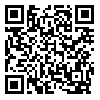Wed, May 7, 2025
[Archive]
Volume 35, Issue 1 (1-2021)
Med J Islam Repub Iran 2021 |
Back to browse issues page
Download citation:
BibTeX | RIS | EndNote | Medlars | ProCite | Reference Manager | RefWorks
Send citation to:



BibTeX | RIS | EndNote | Medlars | ProCite | Reference Manager | RefWorks
Send citation to:
Hashemi-Madani N, Emami Z, Khamseh M E. International Scientific Collaboration on Pituitary Research: A Social Network Analysis. Med J Islam Repub Iran 2021; 35 (1) :1370-1381
URL: http://mjiri.iums.ac.ir/article-1-7625-en.html
URL: http://mjiri.iums.ac.ir/article-1-7625-en.html
Endocrine Research Center, Institute of Endocrinology and Metabolism, Iran University of Medical Sciences, Tehran, Iran , Emami.z@iums.ac.ir
Abstract: (1683 Views)
Background: Social network analysis (SNA) evaluates the connections and behavior of individuals in social groups. The scientific collaboration network is a kind of SNAs. A social network could be defined as a collection of nodes (social existence) and links (connections) associated with the nodes. The aim of this study was to evaluate the scientific outputs and collaboration networks of the countries and authors using indicators of SNA in the field of pituitary disorders between 2000 and 2020.
Methods: This is a practical study performed by applying a scientometric approach and SNA. We retrieved 31257 papers in the field of pituitary disorders between 2000 and 2020. Data were analyzed using scientific software, namely, VOSviewer, UciNet, and Netdarw.
Results: Based on degree centrality, Colao and Pivonello in the world, Shimon and Kadioghlu in the Middle-East (ME), and Khamseh, Ghorbani in Iran achieved the top ranking. Based on the betweenness centrality, Pivonello, Colao, and Chanson in the world, Laws, and Kadioghlu in the Middle-East, and Larijani, Mohseni, and Khamseh in Iran were known as the top authors. According to closeness centrality, Pivonello, Colao, and Chanson in the world, Kadioghlu and Kelestimur in the Middle-East, and Mohseni, Khamseh, and Larijani in Iran were the top authors. The map of the authors’ collaboration in the field of pituitary disorders consists of 92 nodes. A total number of 77313 authors had global collaboration. The global collaboration network was comprised of 129 nodes (country) and 2694 links (country’s collaboration). The Middle-East collaboration network revealed 69 nodes and 1708 links. The collaboration network of the Middle-East countries consists of 13 nodes and 50 links.
Conclusion: Authors with a higher degree, betweenness and closeness centrality have greater efficiency (the number of articles) and effectiveness (the number of received citations). Moreover, the authors and countries that published more scientific products received more citations. In addition, in the Middle-East countries, the interdisciplinary scientific collaboration between the researchers in the fields of endocrinology, neurosurgery, pathology, and radiology has a significant impact on improving scientific outputs.
Methods: This is a practical study performed by applying a scientometric approach and SNA. We retrieved 31257 papers in the field of pituitary disorders between 2000 and 2020. Data were analyzed using scientific software, namely, VOSviewer, UciNet, and Netdarw.
Results: Based on degree centrality, Colao and Pivonello in the world, Shimon and Kadioghlu in the Middle-East (ME), and Khamseh, Ghorbani in Iran achieved the top ranking. Based on the betweenness centrality, Pivonello, Colao, and Chanson in the world, Laws, and Kadioghlu in the Middle-East, and Larijani, Mohseni, and Khamseh in Iran were known as the top authors. According to closeness centrality, Pivonello, Colao, and Chanson in the world, Kadioghlu and Kelestimur in the Middle-East, and Mohseni, Khamseh, and Larijani in Iran were the top authors. The map of the authors’ collaboration in the field of pituitary disorders consists of 92 nodes. A total number of 77313 authors had global collaboration. The global collaboration network was comprised of 129 nodes (country) and 2694 links (country’s collaboration). The Middle-East collaboration network revealed 69 nodes and 1708 links. The collaboration network of the Middle-East countries consists of 13 nodes and 50 links.
Conclusion: Authors with a higher degree, betweenness and closeness centrality have greater efficiency (the number of articles) and effectiveness (the number of received citations). Moreover, the authors and countries that published more scientific products received more citations. In addition, in the Middle-East countries, the interdisciplinary scientific collaboration between the researchers in the fields of endocrinology, neurosurgery, pathology, and radiology has a significant impact on improving scientific outputs.
Keywords: Scientometric, Scientific Collaboration Network, Co-Authorship, Social Network Analysis (SNA), Pituitary Disorders
Type of Study: Original Research |
Subject:
Endocrinology
Send email to the article author
| Rights and permissions | |
 |
This work is licensed under a Creative Commons Attribution-NonCommercial 4.0 International License. |








